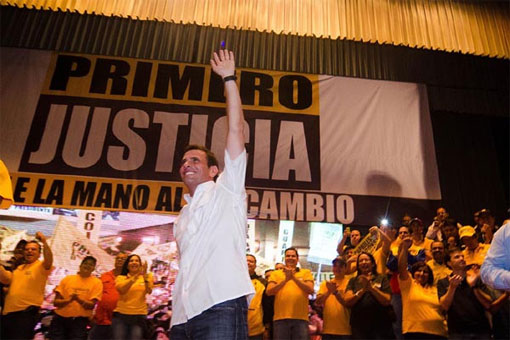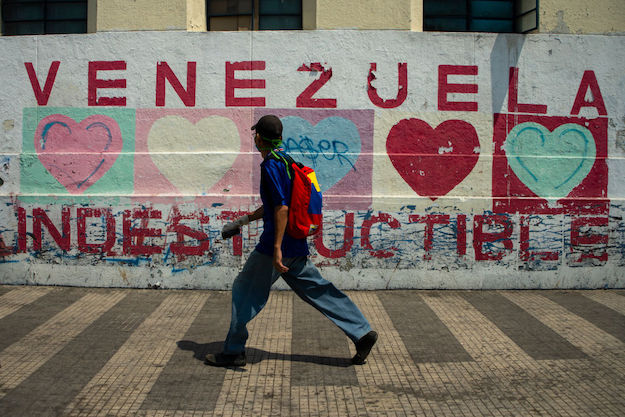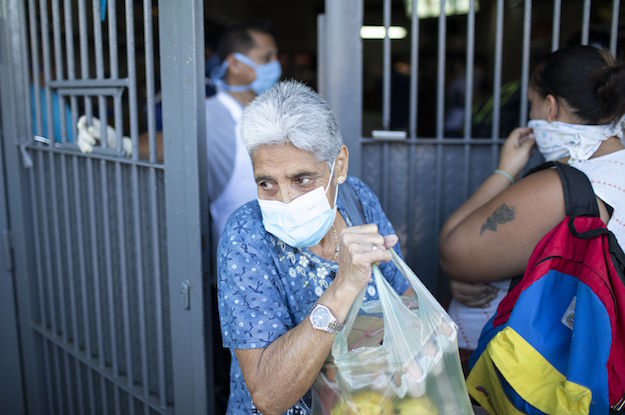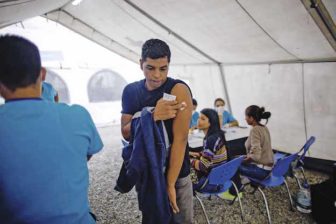After years of being rudderless, Venezuela’s opposition to Hugo Chávez finally has a leader. Miranda Governor Henrique Capriles Radonski soundly defeated four other candidates on February 12 to become the opposition’s sole presidential candidate for October’s presidential election. That he did so without providing details on his vision makes his victory all the more remarkable.
Three million people showed up to select the presidential candidate, as well as candidates for dozens of mayoral and gubernatorial races. Capriles Radonski won with 62 percent of the vote, beating his closest rival among voters across all income levels and winning in all but two of the nation’s 23 states. In Caracas, he won with 76 percent of the vote.
Capriles Radonski has honed his message relentlessly during the primary season. He talks of there being “a way” of “progress for everyone,” where education is the centerpiece and where “quality employment” is available to all, regardless of political affiliation.
But putting the clichés and slogans aside, what exactly is Capriles Radonski’s vision? Chávez claims he is a “rancid right-winger,” but past writings from some of his top advisers support Capriles Radonski’s claim that he is instead a progressive follower of the model of former Brazilian President Luiz Inácio Lula da Silva.
An indicator of his socioeconomic vision—and his political strategy—is the policy recommendations included in Venezuela: Un Acuerdo para Alcanzar el Desarrollo (Venezuela: an Agreement for Development), a book published in 2006 and co-authored by key advisors to the opposition candidate. Marino González, who spearheaded the platform of the opposition Mesa de la Unidad Democrática (Coalition for Democratic Unity), wrote on the need for health care reform in Venezuela; Capriles Radonski’s chief economic advisor, Ricardo Villasmil, looked at the importance of balancing economic and social policy. Both are Venezuelan academics who also studied in the United States—González at University of Pittsburgh and Villasmil at Texas A&M.
González’ chapter—a possible blueprint for the candidate’s health policy—praises the British model of a state-run public health system that can coexist with a private one. It highlights the need for equal access to health care, acknowledges the constitutional limits to private participation in the health industry, and advocates for an expansion of public health care financed by increased taxes. The goal, writes González, is for Venezuela to move toward a Canadian-style single-payer model, if not a fully state-run system. No mention is made of the need to foster private care, innovation or private insurance markets.
In terms of macroeconomics, Villasmil underscores how tackling Venezuela’s structural fiscal deficit is of crucial importance for addressing the economic volatility. But he does not advocate for shock therapy along the lines of the ill-fated reforms of 1989; instead, Villasmil blames these policies for causing a political crisis that included the Caracazo riots in and around Caracas in 1989 and the 1992 coup attempt led by Hugo Chávez. Capriles Radonski’s economic advisor also praises how economic policy in the early years of the Chávez era resulted in political sustainability, even though these same policies were erroneous from an economic point of view. The goal, says Villasmil, is to use social policy as a cornerstone of economic policy and as a key to governability. He says the dichotomy between social and economic policy is a false one in oil-rich Venezuela.
Venezuela has serious problems with the financial sustainability of its pensions system, and it is only going to get worse in the next few years. In the 1990s, the government tried to solve these problems by introducing market reforms to the system, but these were never implemented and were later reversed by the Chávez administration. Villasmil agrees with some of these reversals. However, he sees the current public system as financially insolvent. Still, he argues for gradually moving toward a defined, individualized contribution system and away from a purely public one.
Villasmil is aware, though, of the serious political economy constraints of enacting such a reform. After all, moving from a purely distributional public system endangers the state’s ability to divert resources for political gain. He argues for consensus, based on clear information about the financial status of the current system, before proceeding with any reform. The economic advisor also advocates tax increases and other revenue-increasing measures to ensure the system remains viable.
Using Venezuela: Un Acuerdo para Alcanzar el Desarrollo as a guide, it is clear that Capriles Radonski’s main advisors are not driven by right-wing philosophy. Their arguments shun ideology for pragmatism and, if anything, envision a strong role for the state in the economy. In calling for greater tax revenues, they envision a model similar to Brazil where a large, social-democratic state cooperates with the private sector.
Capriles Radonski has hinted at this vision throughout the campaign. He talks about being a follower of Lula’s model, and of supporting Brazil’s model of the public and private sectors working together to create jobs. He also has pledged to not reverse many of Chávez’s policies including leaving intact many regulations—such as the controversial currency exchange control—until the economy “is ready for it.” If elected, he has promised that the hundreds of expropriated private companies and farms will not be re-privatized, but instead will be studied on a case-by-case basis.
In spite of these policies, he is still perceived as right-of-center in many quarters. Teodoro Petkoff, a leading opposition left-wing intellectual, insisted before the primary that Venezuela’s transition had to be led by someone from the center left, and used that argument to support Pablo Pérez, the main rival of Capriles Radonski.
The false perception of Capriles Radonski as a right-wing candidate may have something to do with his wealthy upbringing. It may also come from his party, Primero Justicia (Justice First), which defines itself as occupying the “humanist center” of the political spectrum. In spite of this, many of its leaders have links to Spain’s Partido Popular and Mexico’s Partido Acción Nacional. The perception may also be fueled by the frequent public displays of religiosity by some of the party’s figureheads, with Capriles Radonski chief among them.
Put all these variables together and a stereotype is born.
Reality, though, is different. If elected, Capriles Radonski would undoubtedly be more market-friendly than Chávez, but some of his policies would run contrary to those of a Tea Party member or a Thatcherite conservative. His worldview in many respects is decidedly progressive. That should serve him well in a country that does not seem to be looking for a radical break from the socialism of Hugo Chávez.







